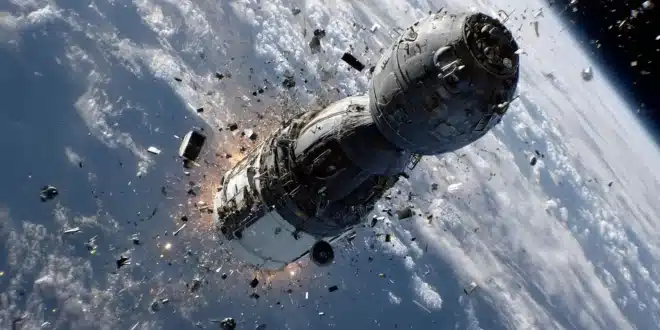After more than five decades in orbit, the Soviet-era spacecraft Kosmos 482 re-entered Earth’s atmosphere on May 10, 2025, concluding its prolonged unintended mission. The Russian space agency Roscosmos confirmed that the spacecraft descended into the Indian Ocean, approximately 560 kilometers west of Middle Andaman Island. This event marked the end of a 53-year orbital journey that began with a failed attempt to reach Venus.
Origins and Mission Failure
Kosmos 482 was launched on March 31, 1972, as part of the Soviet Union’s Venera program, which aimed to explore Venus. The spacecraft’s twin, Venera 8, successfully landed on Venus later that year. However, Kosmos 482 failed to escape Earth’s orbit due to a malfunction in its launch vehicle’s upper stage. An incorrectly set timer caused the Blok L stage to shut down prematurely, preventing the probe from achieving the necessary velocity for interplanetary travel. Consequently, the spacecraft was stranded in a highly elliptical Earth orbit, where it remained for over half a century.
Re-entry and Impact
In the days leading up to its re-entry, space agencies including Roscosmos, NASA, and the European Space Agency closely monitored Kosmos 482’s trajectory. Predictions indicated a re-entry window between May 9 and May 13, with the most probable date being May 10. The spacecraft’s descent was uncontrolled, and due to its robust construction—designed to withstand Venus’s harsh conditions—there were concerns that parts of it might survive re-entry and reach Earth’s surface. Ultimately, Kosmos 482 re-entered the atmosphere and impacted the Indian Ocean without causing any known damage.
Design and Durability
The lander module of Kosmos 482 was engineered to endure extreme conditions, featuring a titanium shell capable of withstanding high pressures and temperatures. This durability contributed to its prolonged presence in orbit and the potential for surviving re-entry. The spacecraft’s resilience underscores the challenges associated with space debris management, particularly concerning objects designed for interplanetary missions.
Kosmos 482’s re-entry highlights the enduring presence of space debris resulting from past missions. As the number of objects in Earth’s orbit continues to grow, the importance of tracking and managing space debris becomes increasingly critical to ensure the safety of both space operations and terrestrial environments.
This incident serves as a reminder of the long-term impacts of space exploration activities and the necessity for international collaboration in addressing orbital debris.


